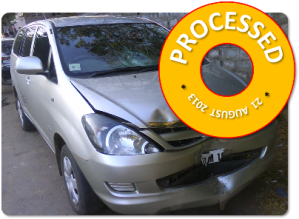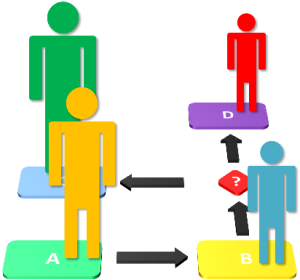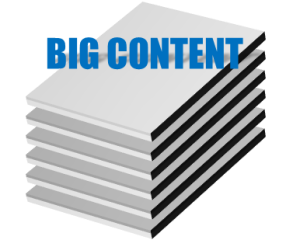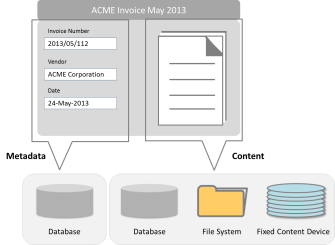Approaching ECM
 This is a variation of a post I published years ago. However I feel that approaching enterprise initiatives in a structured manner can reap rich benefits. Having watched and participated in many ECM and BPM initiatives around the world, I feel that it is not impossible to avoid failures. Though the success/failure statistics is heavily lopsided in ECM, with careful planning and execution we can definitely swim against the tides.
This is a variation of a post I published years ago. However I feel that approaching enterprise initiatives in a structured manner can reap rich benefits. Having watched and participated in many ECM and BPM initiatives around the world, I feel that it is not impossible to avoid failures. Though the success/failure statistics is heavily lopsided in ECM, with careful planning and execution we can definitely swim against the tides.
Enterprise Content Management and Business Process Management are not merely IT projects. Ascending on an ECM/BPM path requires meticulous planning, execution, and measurement. For all stakeholders, it is essential to internalize that such an initiative will definitely alter the way the organization executes its business, positively.
ECM/BPM is about business transformation. It is about aligning people, process, and content with business priorities. So, it is essential for an organization to define how this alignment can be achieved. Any organization that is serious about content and process management must define an ECM/BPM program.
ECM/BPM Program
A program is mandatory for any organization contemplating ECM/BPM. Putting a program in place does not mean that the organization should look at executing the program in a massive way. The organization need not, and in many cases should not, proceed with a big bang approach to ECM/BPM. At the same time, projects should not be executed in isolation thus creating silos within the organization. Defining a program helps the organization in setting the direction of the ECM/BPM journey. Even if the execution approach is small and tactical, a program will let the organization align such steps in the same strategic direction.
An ECM/BPM program involves four steps:
- Articulating the objectives
- Planning
- Executing the plan
- Measuring the program itself
Objectives
It is essential that the organization understand what the objectives of this program be. Such a program will be deemed to fail unless there is buy-in from all key stake holders in the organization. The top management, functional heads, line managers, and all employees of the organization should be prepared well for the change and its benefits.
The commonly achieved benefits of such a program are:
- Improved organizational efficiency and effectiveness
- Better control of the operations
- Increased collaboration between functions
- Better customer satisfaction levels
- Ability to scale up operations better
- Cost reduction
While all or many of these benefits can be achieved in an ECM/BPM program, it is paramount to identify the primary potential benefits. The goal for potential benefits is unique for an organization, so the first step of such a program is to identify them. The most important potential benefits will be the objectives of the program.
Defining the objectives will be an exercise where representatives from all key stakeholders participate. Potential benefits can be defined only if current pain points are enumerated and analyzed. This is a vital exercise since a solution cannot be arrived at before understanding the problem in detail.
The outcome of this step will be clearly articulated organizational objectives for the ECM/BPM program that are endorsed and internalized by the key stakeholders.
Planning
The previous step defined what the program will bring to the organization. The planning step will define how the objectives will be met, who will make it happen, when and where the benefits can be realized.
The first step will be to put together a team who will manage and monitor the planning and execution of the program. The proposed team should have representation from the top management, business units, user community, information technology, compliance group, and other support functions.
This phase will flush out more details about the individual group pain points and areas of improvements. Besides, the step will define tactical and strategic approaches in dealing with the problems in hand. The most significant part of the planning process is to put together a potential organization-wide roadmap for achieving the objectives.
The last priority for the planning phase will be to prioritize the tactical initiatives that are achievable in the shorter timeframe and identify potential execution plans.
Execution
The execution phase will focus on identified and approved tactical plans. It will involve looking at these tactical plans, defining the problems in detail, identifying potential solution, identifying necessary technological improvements, getting internal or external teams to bring execution capabilities, and finally carrying out solution projects.
Execution phase is a long-term process and will involve a multitude of internal teams, technologies, vendors, and administrative functions. The program team will play a significant role in this phase to ensure that each tactical plan execution is fully aligned with the organizational objectives defined for the program.
Measurement
The most important and the most neglected step in an enterprise wide program is measuring. An organization should have a clear understanding of the ROI (Return On Investment) at every step of the program. ROI is nothing but a quantification of the objectives. Objectives are easy to enumerate, but difficult to quantify. In most cases, measurement and monitoring are lost in the execution step.
The program team will need to define measurable matrices for each tactical plan. These parameters are to be reviewed during and after the execution of the tactical plan. The findings are then to be incorporated into future tactical plan execution and approvals. This will ensure that the ROIs are accrued in the right direction throughout the program.
 ons happen.
ons happen.





